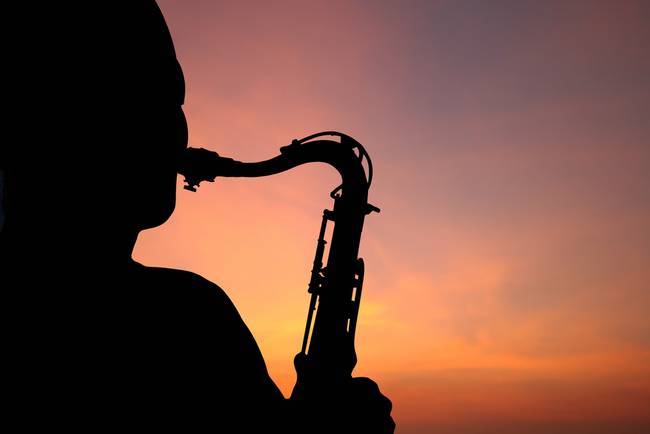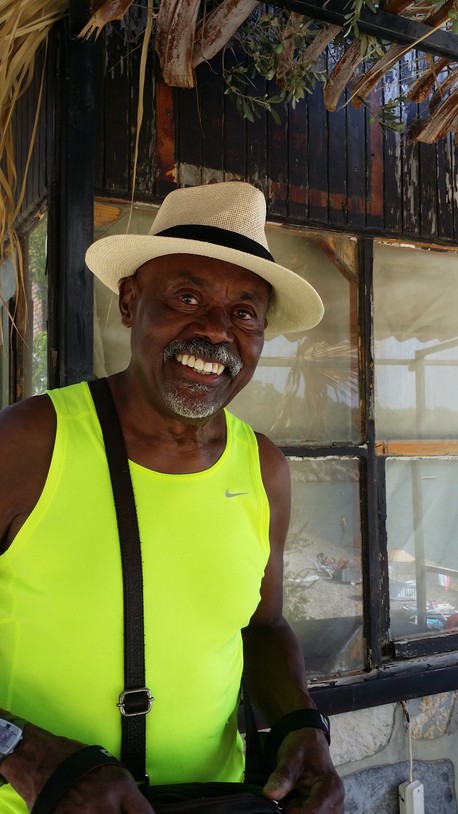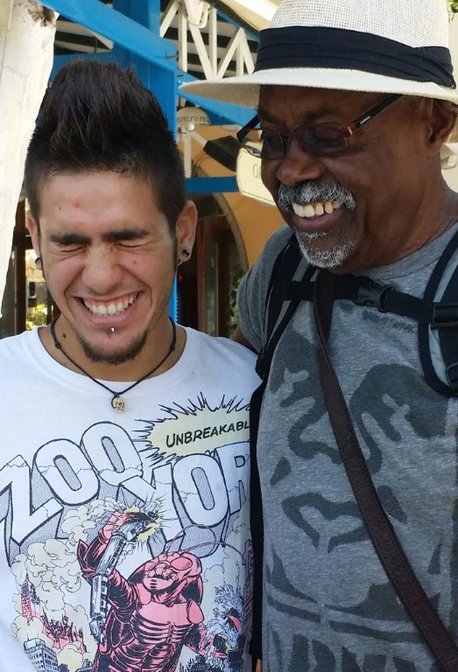George Goodman has been a journalist for most of his life, doing reporter jobs and writing for different kind of publications. He started at the Los Angeles black weekly
Sentinel.
‘’My uncle was a newspaper publisher and he offered me a job and my mother wrote for the Kansas City Call, a black weekly’’.
Then followed publications such as
Crisis, the
Countywide New Service (a Los Angeles county wire service), the magazine
Ebony, New York based
Look Magazine, and lastly,
New York Times. He also had a temporary reporter job on the
Associated Press, during the
Watts riots (which took place in the Watts neighborhood of Los Angeles in August 1965). The six days of racially fueled violence and unrest resulted in 34 deaths, 1,032 injuries, 3,438 arrests, and over $40 million in property damage. Goodman remembers having to negotiate with suspicious white policemen who hadn't realized the Associated Press had temporarily hired black reporters to cover the story. At the same time, he had to moderate African Americans' suspicions that he was not a snitch for the establishment. As a journalist, it was one of the many lessons in walking between two worlds.
'It was a scary time," Mr Goodman recalls.
‘’I didn’t write about music, actually, until I got to The Times’’, says Mr
George in a (fragmented) video
interview for the Maynard Institute.
‘’Well, I did a story about B. B. King and I traveled with him for two weeks in the South. My first music piece, beyond The Times (I did quite a few actually there - Miles Davis, and many other people…And I did write some about theater, a little bit, but that was before the times when blacks could be critics at The Times.) This is one of the times when they say blacks didn't have credibility in the larger art world, because people thought they would have a totally black perspective, which is maybe true. My first music piece was a piece I pitched to Quest magazine, which was in publishing, and it was a profile of Barney Josephson. And I made several other pieces for Quest. Also, during jazz festivals, The Times would send me overseas, to Europe, to do pieces for them.’’
Once in a while,
George Goodman would interrupt his stories to tell me who’s playing the song that we could hear from the hidden speaker. I remember being very frustrated that I didn't have any recorder with me, since Mr Goodman would have been one of the most interesting persons I ever had the chance to interview. But we did get in touch and exchanged several emails afterwards, until this ‘’piece’’ eventually arose.
‘’ I don't know what the fuck music journalism is. I was a reporter and I still am. Reporters in my time wrote about the Bruckner Expressway, the courts, police, and schools. There was no bag other than that of writer/reporter. I am not a critic...turned down the offer at the NYT,’’ Mr George writes me, when I ask him via email about music journalism. And to this extent, he suggests me one of his stories for
The Conoisseur, about the French jazz pianist
Michel Petrucciani. And even if he never composed it, music has always been around his life.
‘’I grew up in KC where there were many heavies, including Ben Webster (American jazz tenor saxophonist) and Bird and Jay McShann’’. As a child and later youngster, he would listen to
‘’Duke Ellington and all the black radio ‘stars’ of Harlem's Golden Age, from 1920 - through 1965.’’
Besides his surgeon (as George recently had two knees replaced),
Sonny Rollins is one of the persons that he admires the most and considers a living hero. Actually, in 1999,
The Atlantic magazine published an extended piece about Sonny Rollins, written by George Goodman.
‘’ON a summer day in 1960 I lugged my tenor sax up a flight of wooden stairs in an old building in midtown Manhattan where a stubby little man named Jake Koven rented out practice rooms to musicians (…). I was playing the minor-sixth intervals of Thelonious Monk's "Misterioso," thinking I sounded cool, even a little intimidating, when the first four notes of the 1930s hit "Three Little Words" came through the wall like shots from a nail gun. The saxophonist in the other room began splintering the notes into partials, and then constructed arpeggios that swirled up from the bottom of his horn, spiraling out beyond the legitimate range of the instrument and into the stratosphere of the piccolo. He restated the notes, played them bel canto, made them waltz, turned them upside down and inside out, and ran them up-tempo in 4/4 time, taking outlandish liberties with meter and intonation. It was pure passion, power, and precision. It was pure Sonny Rollins.’’



